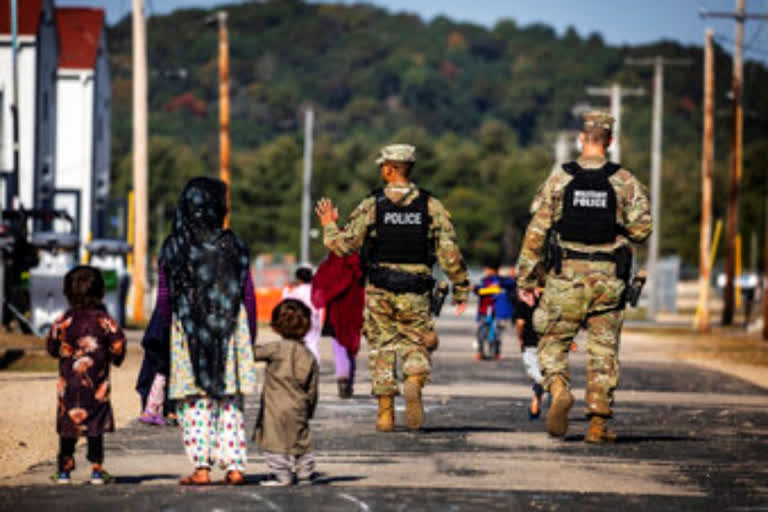Washington: Military bases that housed tens of thousands of Afghan refugees in the US incurred almost USD 260 million in damages that in some cases rendered buildings unusable for troops until significant repairs to walls and plumbing are made, the Pentagon's inspector general found.
Over the last two weeks of August 2021, the US Air Force managed the largest humanitarian evacuation in its history, airlifting 120,000 people from Afghanistan in just 17 days. The bulk of those passengers were Afghans fleeing Taliban rule, and US aircraft delivered tens of thousands of those Afghans initially to bases in Qatar, the United Arab Emirates, Spain, Italy, Bahrain and Germany.
After processing, many of the refugees were flown to eight military bases in the US, where many were housed for months as they awaited visa processing and resettlement; the last Afghan refugee left military housing in February. The refugees were housed at Fort Bliss, Texas; Joint Base McGuire-Dix-Lakehurst, New Jersey; Fort McCoy, Wisconsin.; Camp Atterbury, Indiana; Fort Pickett, Fort Lee, and Marine Corps Base Quantico, Virginia; and Holloman Air Force Base, New Mexico.
The sheer volume of people in the temporary housing left those barracks and buildings with significant wear and tear, the inspector general found. In one case, training for the Indiana National Guard was relocated from Camp Atterbury to Fort Campbell, Kentucky, due to damages caused during Operation Allies Welcome".
The facilities need to be restored to a condition that enables them to conduct trainings, prepare for future events, and return to normal base operations, the IG found. For example, of the USD 260 million in approved restoration costs, the Defence Department approved about USD 16 million for Camp Atterbury to replace mattresses and furniture and repair floors, doors, windows, plumbing, fire alarm systems, and landscaping.
But the inspector general questioned whether all the repair work requested by the eight bases was connected to the refugees' stay. For example, Fort McCoy, which housed 12,706 refugees, was approved for USD 145.6 million to repair buildings and plumbing, an amount that was more than three times the combined restoration needs of Fort Bliss and Fort Pickett, which had housed similar numbers of refugees. (AP)



